How To Treat Calluses On Hands From Weightlifting At Home?
Author:
Reviewed by:
(21 years of Oly Lifting experience)
Unlock your full potential by engaging with our experts and community! Have questions about your fitness journey or looking for expert advice on weightlifting techniques? Don’t hesitate — leave a comment below and Sergii Putsov will provide a personalized answer and insights to help you reach your goals.
Torokhtiy is reader-supported. Some links are affiliate links, and we may earn a commission at no extra cost to you. See our disclosure page for details.
In this article, we’ll show you how to treat calluses on hands from weightlifting. This simple and budget-friendly guide can be done at home using common household items.
Besides that, we’ll also teach you how to prevent calluses from weightlifting exercises, so you can avoid this problem in the future. Let’s begin with a quick summary:
How To Treat Calluses On Hands From Weightlifting? Start by soaking your palms in warm water. Gently file the calluses down using a callus remover or pumice stone. Finish with a layer of moisturizing hand cream. Additionally, use chalk, grips, or gloves to reduce calluses from lifting.
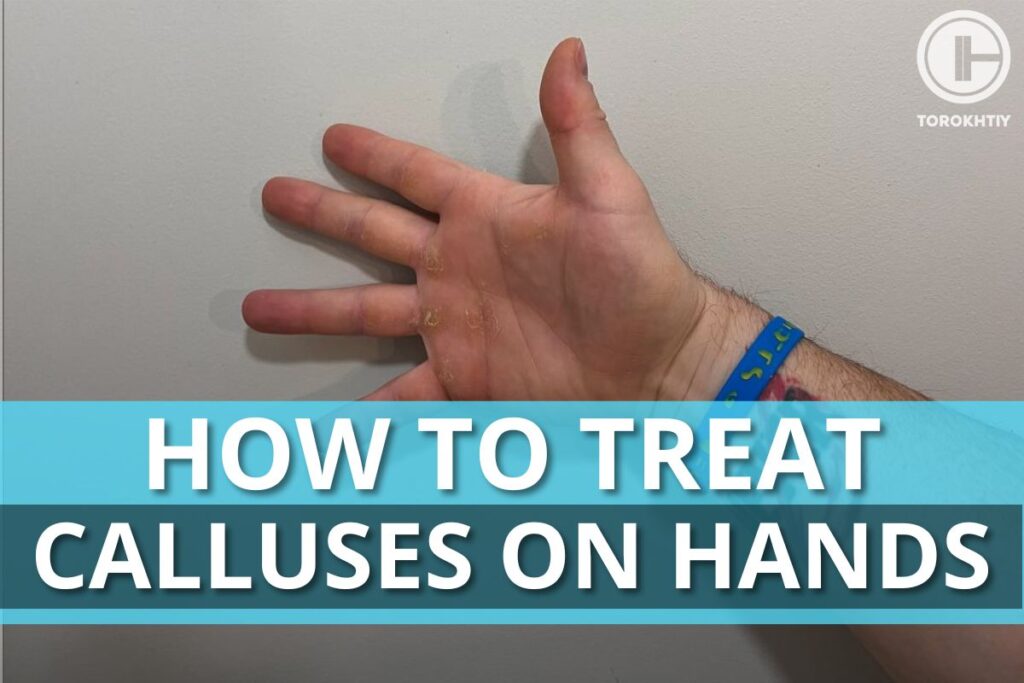
Why Do Calluses Appear On The Hands Of Weightlifters?
Calluses are thickened and hardened patches of skin that form in response to repeated friction or pressure. Our bodies create them as a protective layer for the tissue underneath, most commonly on our palms and feet. If you perform any kind of physical activity that squeezes your skin, they’re basically unavoidable.
A weightlifting callus typically forms on the top of your palm, just underneath your fingers, as a result of pressure from firmly gripping the barbell. It can also occur from other exercises that involve a tight grip – such as dumbbell training, rowing, or pull-ups – to name a few. But do calluses make your hands stronger or are they just a nuisance?
Calluses from lifting can be irritating to deal with, but with proper care eventually they will make the skin on your palms stronger. This process is called Hyperkeratosis – excessive thickening of the outermost layer of the skin (Epidermis) – due to a sudden buildup of Keratin from the pressure. Keratin is a protein essential to skin development and treating outer wounds.
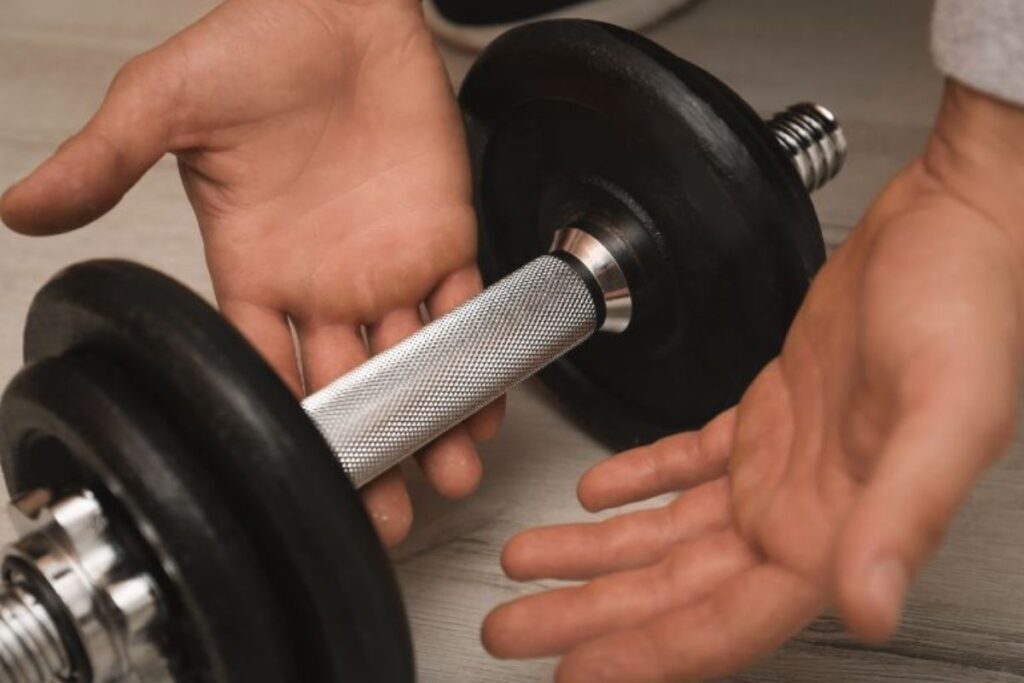
If you take care of your calluses as opposed to ripping them off, you leave the excess Keratin behind as a protective layer. That way, you simply signal to your body that the affected area requires developing a thicker skin to avoid issues in the future. Your body will react accordingly and, over time, you’ll be able to see and feel the skin getting stronger (thicker).
It’s important to differentiate calluses from blisters. They form in a similar way and many people have the two confused. Calluses are simply a layer of dead skin, often unresponsive to touch and not problematic unless you let them rip. Blisters on the other hand are fluid-filled sacs that form as bumps on your skin. They’re usually painful to touch and require more time-consuming and delicate treatment.
What To Do If Calluses Appear In Weightlifting?
Calluses on your palms are the stamp of approval for a weightlifting workout well done. That said, they can be problematic if left unattended. Here’s what you should do to treat them at home:
1. Leave Them Be
As discussed in the introduction to them, calluses are not inherently a bad thing. At first glance, it may be tempting to pick on or even tear off the excess skin. However, when they first appear, calluses are best left alone and treated post-exercise.
The first thing to do when dealing with them is measure out if they can cause you problems or not. When they start to form, it’s best to just pay close attention to them for now. For example, looking at and feeling them out after every exercise set.
If they’re not painful to the touch and the skin around them doesn’t appear to be swelling unnaturally, there’s nothing to be alarmed about. Only if you feel pain or discomfort or notice it starts to tear should you consider stopping your workout. While many athletes work through ripped calluses and boast about it on social media, this can come with several setbacks that can stop you from working out for the foreseeable future.
Working out with a ripped callus can at the very least be painful and discomforting. But more importantly, when you work out with exposed skin, you increase the risk of introducing bacteria and dirt into the wound, which can lead to infection and require medical intervention to heal.
2. Soak Them In Warm Water
After you’re done working out, it’s time to properly treat the calluses. Start by washing your hands with cold or lukewarm water to avoid further damage to the skin, paying attention to gently rub the areas of the palm where calluses are forming. Once you’re sure your hands are nice and clean, it’s time to soak them in warm water.
For most people, the ideal temperature will be around 100°F/38°C. Fill up your skin or bowl, place your hand inside, and leave it in for about 5 minutes. Warm water helps relax your muscles and softens the skin, which will help us prepare for the next step in dealing with the calluses

3. File Them Down
The surface layer of the callus is composed almost exclusively of dead skin cells. It’s recognizable by the off-white coloring. While these dead skin cells cause no problems on their own, their formation is usually uneven and it can start to chip away and tear, pulling with it the healthy skin underneath and creating wounds. Aggressive barbell knurling in particular can tear into them quickly. To avoid this, we simply have to file down the callus, removing the excess dead skin and leaving the surface area smooth.
There are specialized tools for this simply called callus removers that can be found at any drugstore. If you’re a female lifter or share your living space with women, chances are high there’s one laying around in the bathroom already. Alternatively, you can use a pumice stone or an old nail file – a new one may be too rough on the skin. After that, you can use nail clippers or scissors to gently remove any rough edges.
Follow us!

Free!
Get a 2-week Weightlifting Program as a bonus for the subscription to kickstart your training plan!

Free!
4. Moisturize Them With Cream
Once you’re done sizing down the calluses, treat your hands by rubbing in some moisturizing hand cream. This will help you soften and calm irritated skin, stimulate recovery with healthy ingredients, and make your hands smooth. Many moisturizer creams are specifically designed to deal with rough and bumpy skin formed from dead cells. Some are even labeled “for calluses”.
You don’t need to use overly-expensive branded moisturizers – a simple cream from a department store or local pharmacy will do the trick. If you’re not sure what to get, you can always look online for recommendations or ask a pharmacist. If, however, you have an outstanding skin condition, consider it necessary to consult a dermatologist.
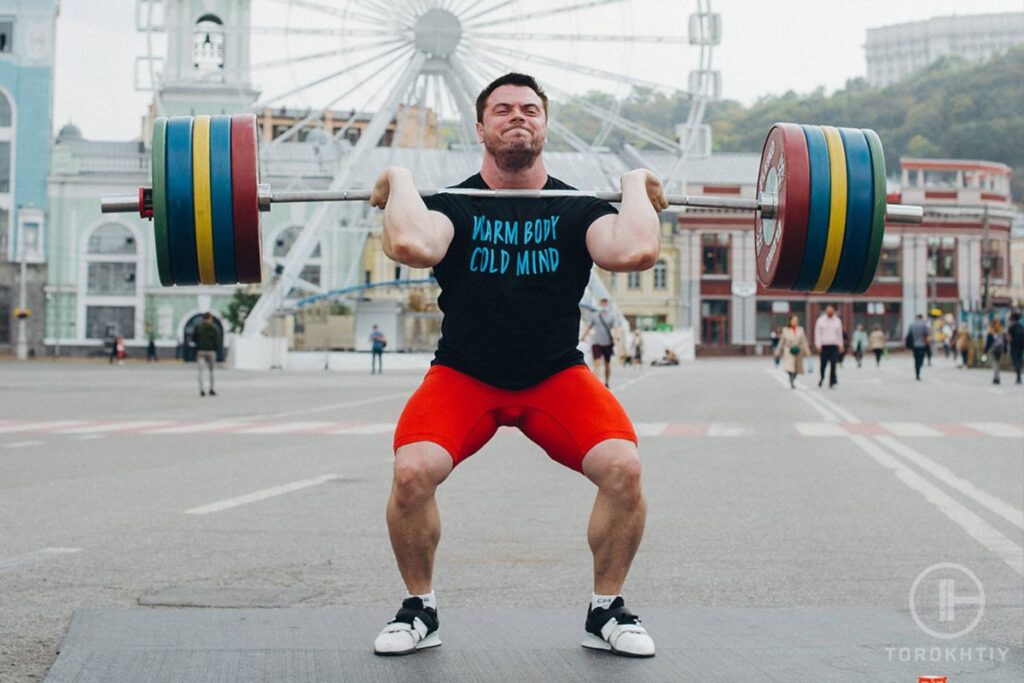
How To Prevent Calluses When Doing Weightlifting Exercises?
Minor calluses from working out are basically unavoidable, even if you don’t lift excessive weight. That said, here are a few tips on how to stop calluses on hands from gym equipment:
1. Mind Your Grip
The first thing you can do to prevent calluses is to simply mind the way you grip the equipment. Before you lock in your grip, make sure that your hand position is correct.
Deadlifts are probably the most common weightlifting exercise that leads to calluses. The pulling motion involved in deadlifts rubs the barbell directly against the skin, especially when it is tightly gripped and sinks in. One of the ways you can attempt to prevent this is by experimenting with grip variations. The three commonly used deadlift grip variations are the overhand grip, mixed grip, and hook grip. Each of these grips can distribute pressure on the hands differently, providing options to minimize callus development and enhance your deadlifting performance.

For exercises with a push-based motion, such as a bench or overhead presses, the handle should be sitting in the middle of your palm where it creases. Furthermore, the grip should be slightly loose, to avoid unnecessary tension in the wrists and forearms. Meanwhile, in exercises like squats or lunges, the barbell shouldn’t be supported by your hands anyway. It should be rested on your body and the arms used for balance.
2. Use Protective Equipment
If you find yourself struggling with calluses and skin tears, or if you want to enhance the comfort of your lifts, there are several options for protecting your palms. Weightlifting enthusiasts often turn to three primary choices: chalk, hand grips, or weightlifting gloves, each offering unique pros and cons. More on this topic in a second.
3. Maintain Your Skin Outside The Gym
At the end of the day, maintaining healthy skin in your daily life is equally as important for preventing damage from exercising. A proper skincare routine with regular washing, cleansing, and moisturizing will help the skin on your palms stay clean and hydrated.
Dry skin is more likely to crack and peel off. Keeping it moisturized helps maintain its elasticity and suppleness, lowering the chance of calluses, tears, and other exercise issues forming.
What You Need To Buy Additionally To Avoid Calluses
We briefly touched upon protective equipment in our previous section. We also mentioned using either chalk, hand grips, or weightlifting gloves. Here’s a quick breakdown of each:
1. Hand Chalk
As the name suggests, hand chalk is a substance that weightlifters apply to their hands as a form of skin coating. Usually made of magnesium, hand chalk improves the lifter’s grip by absorbing sweat and other moisture from the hands, increasing friction between the skin and the barbell.
WARM BODY COLD MIND Liquid Chalk
Our favorite brand is the Warm Body Cold Mind Liquid Chalk. Compared to regular chalk blocks, liquid chalk is less messy to deal with as it doesn’t grind down and leaves behind powder. Many gyms don’t allow chalk blocks for this reason, but permit the use of liquid chalk. Moreover, carrying around a plastic container is more convenient. It’s harder to lose and less likely to dirty your gym bag and clothes.

2. Weightlifting Gloves
Weightlifting gloves are a popular gym accessory due to their many uses and general comfort. They offer benefits such as improved grip, reduced skin friction, and added wrist support, making them not only popular in weightlifting, but in other grip-based exercises too.
They come in many shapes and sizes, including full gloves or half-fingered, and are often equipped with comfort features such as protective padding, textured surfaces, and wrist wraps.
3. Hand Grips
Hand grips, also known as lifting grips or gym grips, provide a shielding layer for your palms while gripping exercise equipment. They are especially popular for bodyweight exercises like pull-ups and dips, but some athletes prefer them for weightlifting as well. All things considered, hand grips are typically less expensive than lifting gloves and chalk. But they also tear pretty quickly, especially if you use higher weight amounts, prompting sooner replacement.
| Item | Pros | Cons |
| Chalk | Easy to use Prevents sweat Helps develop skin strength | Needs stock replenishment Messy |
| Gloves | Highest protection level Comfort padding Confidence booster | More expensive upfront Ill-fitting gloves can develop calluses themselves |
| Grips | Inexpensive Lowers hand fatigue Comfortable for many exercises | Can tear pretty quickly Can loosen your grip |
FAQ
What Is The Fastest Way To Heal Calluses On Your Hand?
Start by soaking your palms in warm water to soften the skin. Then, use a callus remover or pumice stone to file down the calluses gently. Afterward, apply a moisturizing hand cream to soothe and nourish the skin.
Is It Normal To Get Calluses From Lifting Weights?
Yes, calluses are practically an unavoidable part of resistance training where gripping equipment is involved. Calluses form in response to repeated friction or pressure, particularly from gripping the barbell tightly during weightlifting. While they can be irritating, they are a natural body response and can make the skin on your palms stronger over time.
Conclusion
You’ve reached the end of our guide on how to treat calluses on hands from weightlifting. Don’t worry if you notice a callus forming on your palm; it’s a normal process that can be easily managed at home and even strengthens your skin over time. For any future encounters with bothersome or painful callus on hand from weight lifting, refer to these simple steps and you’ll handle them with ease.
We’d love to hear from you as well. Have you run into calluses as a result of weightlifting? Which of these tips did you find most helpful?
Let us know in the comments and remember to follow us on our social media pages where we post other valuable fitness content.
Also read:
- What Age Should You Start Lifting Weights
- Weightlifting Meal Plan
- How Many Calories Does Weightlifting Burn
- Critical Weightlifting Mistakes
- Power Clean
- Olympic Weightlifting Program 101
References:
- Corns and Calluses // ClevelandClinic: https://my.clevelandclinic.org/health/diseases/16896-corns-and-calluses
- Hyperkeratosis // Healthline: https://www.healthline.com/health/hyperkeratosis#types
- Epidermis // ClevelandClinic: https://my.clevelandclinic.org/health/body/21901-epidermis
- Keratin // ClevelandClinic: https://my.clevelandclinic.org/health/body/23204-keratin
- Blisters // ClevelanClinic: https://my.clevelandclinic.org/health/diseases/16787-blisters
- Impact of Water Exposure and Temperature Changes on Skin Barrier Function // NCBI: https://www.ncbi.nlm.nih.gov/pmc/articles/PMC8778033/
- Heat therapy // MedicalNewsToday: https://www.medicalnewstoday.com/articles/29108#heat_therapy
- Photos by Torokhtiy Media Team; Juan Domiciano, Pexels; Africa images, Canva.com.
Why Trust Us?
With over 20 years in Olympic weightlifting, strength training, nutrition coaching, and general fitness our team does its best to provide the audience with ultimate support and meet the needs and requirements of advanced athletes and professional lifters, as well as people who strive to open new opportunities and develop their physical capabilities with us.
By trusting the recommendations of our certified experts in coaching, nutrition, and sports training programming, as well as scientific consultants, and physiotherapists, we provide you with thorough, well-considered, and scientifically proven content. All the information given in the articles concerning workout programming, separate exercises, and athletic performance, in general, is based on verified data.
The product testing process is described in more detail here.
Author: Sergii Putsov
Head of Sport Science, PhD
Best Results: Snatch – 165 kg,
C&J – 200 kg
Sergii Putsov, Ph.D., is a former professional weightlifter and National team member, achieving multiple medals in the 94 kg weight category at national competitions. With a Master’s degree in “Olympic & Professional Sport Training” and a Sport Science Ph.D. from the International Olympic Academy, Greece, Sergii now leads as the Head of Sport Science. He specializes in designing training programs, writing insightful blog articles, providing live commentary at international weightlifting events, and conducting educational seminars worldwide alongside Olympic weightlifting expert Oleksiy Torokhtiy.
Reviewed by: Oleksiy Torokhtiy
Olympic Weightlifting Champion, PhD in Sport Science
Best Results: Snatch – 200 kg,
C&J – 240 kg
Oleksiy Torokhtiy is a professional athlete boasting 20 years of experience in Olympic weightlifting. With multiple European and World titles under his belt, he has showcased his prowess in two Olympic Games (Beijing 2008 and London 2012). Upon concluding his illustrious career, Oleksiy dedicated himself to coaching. By 2022, he had conducted over 200 weightlifting seminars worldwide. He is the visionary behind an international sportswear and accessories brand known for its motto, “Warm Body Cold Mind.” Additionally, he is an esteemed author and the creator of a series of training programs and eBooks.




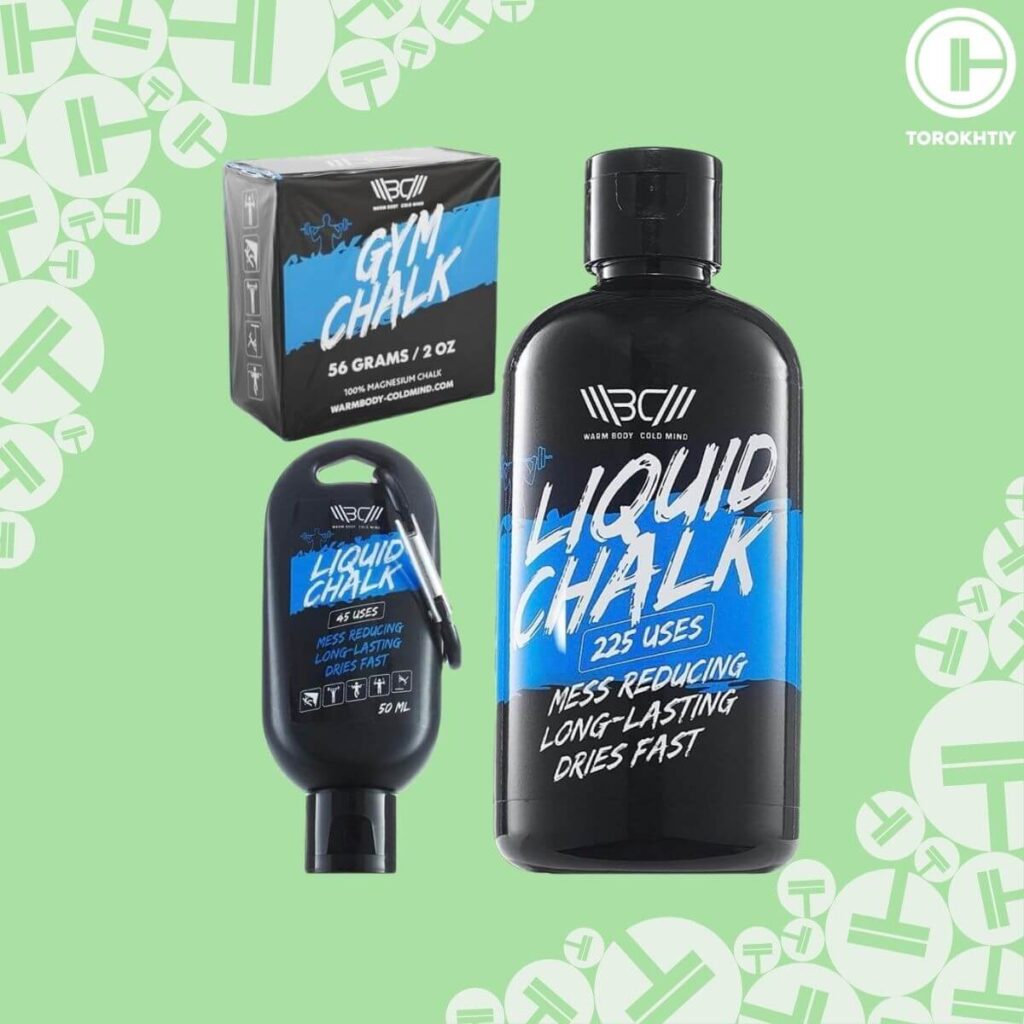
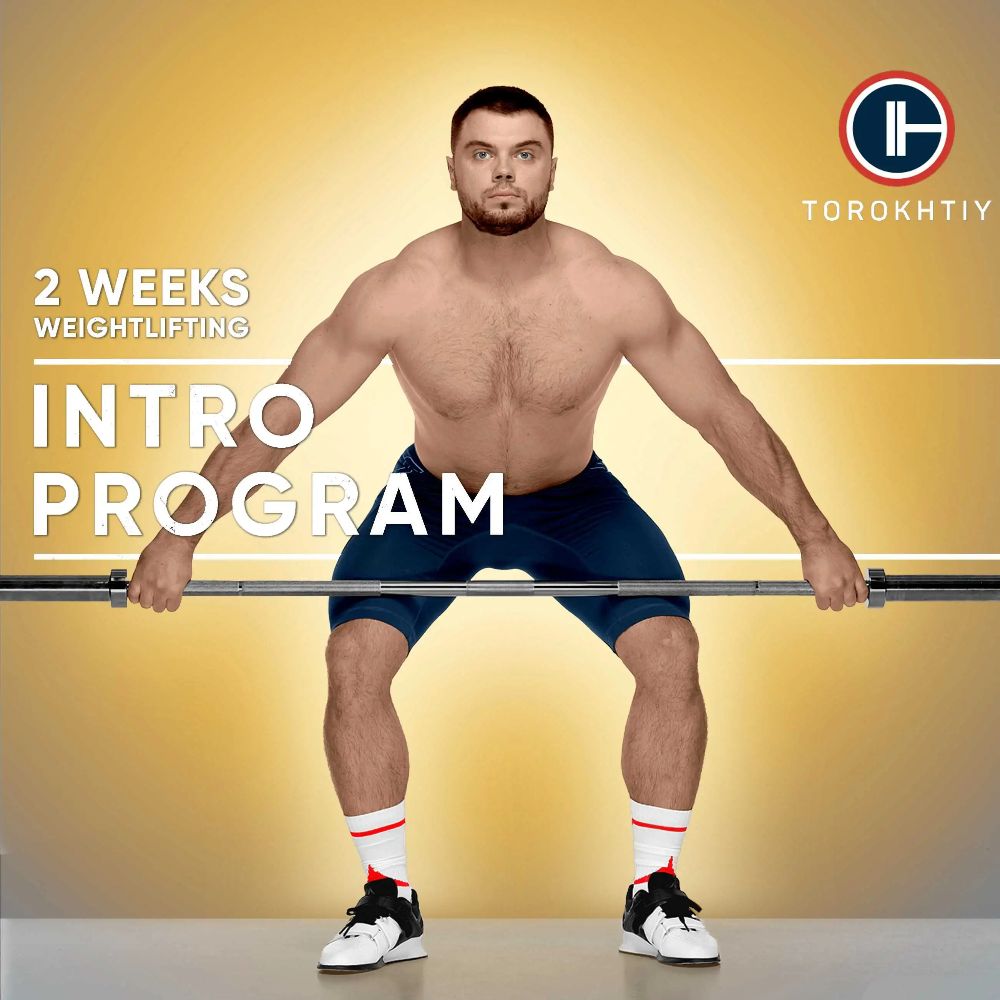
Still have questions after reading our article? Unlock your full potential by engaging with our experts and community! Don’t hesitate — leave a comment below and Sergii Putsov will provide a personalized answer and insights to help you reach your goals.